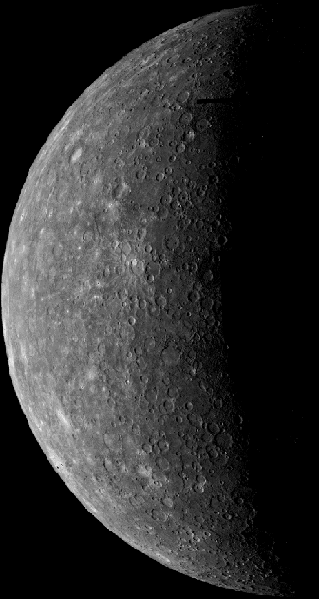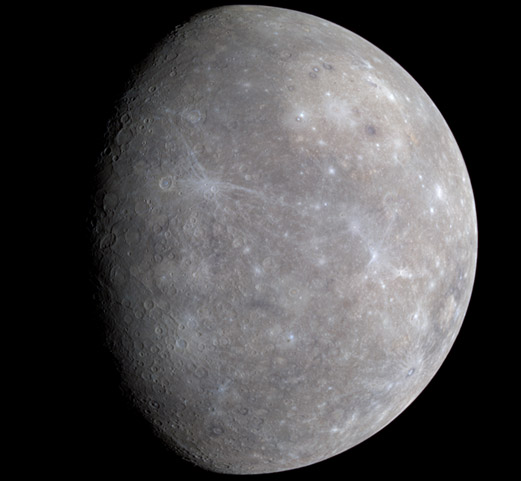
Past: Mariner 10 - Prior to Mariner 10 little was known about the geologic features and terrain types on Mercury. This changed virtually overnight with the first Mariner 10 flyby on March 29, 1974 with the acquisition of the first close up images of the planet's surface. Mariner 10 executed 3 flybys in total. The same hemisphere of the planet was illuminated fo all three flybys and thus the spacecraft imaged only ~45% of the surface at variable quality due to viewing geometry and illumination. The images showed Mercury to be characterized by a lunar-like surface but lacking albedo variations as prominent as those between the lunar highlands and the darker maria.
Present: MESSENGER - The MErcury Surface, Space ENvironment, GEochemistry and Ranging mission executed the first of three flybys of the planet in 2008 and began orbiting Merucry in March of 2011, becoming the first spacecraft to return to Mercury in over 30 years. With the new images acquired by MESSENGER, about 95% of the surface has now been imaged.
Future: BepiColombo - a joint mission between the European Space Agency (ESA) and the Japanese Aerospace Exploration Agency (JAXA), will insert two spacecraft into orbit around Mercury in 2019.


Incoming hemisphere seen by Mariner 10 during its first encounter. Image comprised of a mosaic of over 50 images acquired by the spaecraft before it flew behind Mercury. (Credit: NASA)
Image mosaic taken by MESSENGER's wide angle camera as the spacecraft receded from the planet following its closest approach of the first encounter on January 2008. Images taken at three different wavelengths (1000, 700, 430 nm) of light were combined to create this false color image. This accentuates subtle color differences on the surface that are not apparent in grayscale images. (Credit: NASA/Johns HopkinsUniversity Applied Physics Laboratory/Carnegie Institution of Washington)